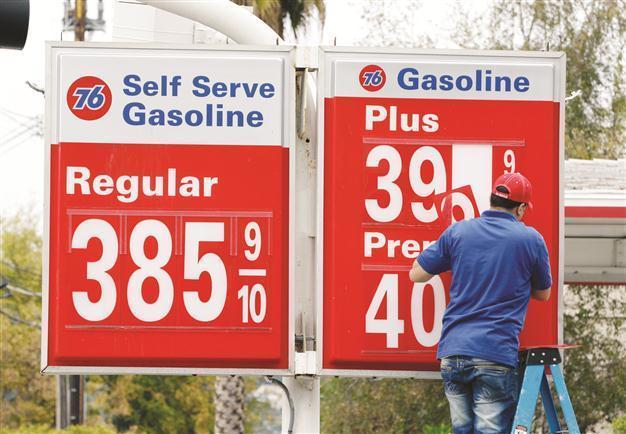Eurozone crisis cools oil market despite Iran effect
PARIS - Agence France-Presse

An employee changes the gas prices at his Union 76 gas station in Oakland, California. IAE has dropped its demand forecast thanks to the worsening economic backdrop. AP photo
The eurozone debt crisis is cooling the global oil market rapidly but likely sanctions against Iran are holding prices up for now, the IEA said yesterday.
The International Energy Agency again cut its forecast for growth of global demand for this year and next, sharply by about 200,000 barrels per day.
And the agency said that the medium-term outlook was “more comfortable” than forecast six months ago.
With global economic growth now looking one-third weaker than in the IEA’s mainstream estimate six months ago, growth of demand for oil would be a more modest 700,000 barrels per day, per year.
Assuming that the growth of production capacity continued, this “leaves the world with 6-8 million barrels per day (mbd) of spare capacity during 2013-2016.
“Greater supply side flexibility is welcome, although it would be a pity for it to come about largely because of suppressed economic activity,” the IEA, which is the energy monitoring and policy forum of the OECD, said in its monthly review.
Oil prices had firmed in November and the beginning of December because of strong seasonal demand in the approach to the northern hemisphere winter and owing to tight supplies.
“Bullish impetus also came from news of a potential EU ban on Iranian crude imports. These factors outweighed escalating economic risks.”
The IEA commented: “Recent months have seen a definite deterioration in the economic outlook for Europe, and accordingly the world.”
It said: “A combination of the worsening global economic backdrop and persistently heightened oil prices has resulted in lower forecasts for global oil demand in 2011 and 2012, with projections trimmed by 0.16 mbd and 0.2 mbd respectively.
“Uncertain prospects for the single European currency continue to provide added downside risk to current economic growth estimates.”
In Singapore yesterday, oil prices were mixed and traders said that the market was unsteady because of doubts about a European Union agreement to solve the eurozone debt crisis.
New York’s main contract, light sweet crude for delivery in January, gained nine cents to $97.86 a barrel. Brent North Sea crude for January delivery shed four cents to $107.22.
The IEA said that global oil demand was now expected to average 89.0 mbd by 2011, a rise of 0.7 mbd from the level in 2010, and then to rise by 1.3 mbd in 2012 to 90.3 mbd.
Global supply rose in November by 0.9 mbd from the October level to 90.0 mbd, owing to a reduction of unplanned production stoppages among members of the Organization of Petroleum Exporting Countries.
Supplies from non-OPEC countries would grow by 0.1 mbd this year but then by 1.0 mbd in 2012 “with strong gains expected from the Americas.”
Supplies from OPEC in November “rose to the highest level in more than three years, up by 620,000 bd to 30.68 mbd with Saudi Arabia and Libya accounting for 80 percent of the increase.”
In the medium term “oil supply prospects look slightly stronger, with recovery from Iraq and Libya coming in at a faster pace, and a game-changer in the making in the form of US light tight oil from shale.”
The IEA estimated: “On a net basis, potential OPEC spare capacity remains tight in 2011 and 2012, but then eases back into a range between 5-6 percent of global demand thereafter.
“This is hardly suggestive of a sloppy market, but it does hint that the supply side of the equation, barring major outages, is capable of matching trend demand growth at, or slightly above, 1.0 mbd per year.”
The IEA said: “All told, the intense tightening in market fundamentals evident during 2009-2011 could ease over the next five years.”
But this did not diminish “the imperative to sustain investment for the future. Developments in the Chinese and Japanese power sectors in the last year have illustrated that oil demand can at times surprise to the upside too.”
The IEA noted: “Global oil demand has been running ahead of supply since economic recovery began in 2009, but has been doing so in a more pronounced fashion since mid-2010.
“There may therefore be a way to go before the sunny uplands of comfortable medium-term supply are reached.”
